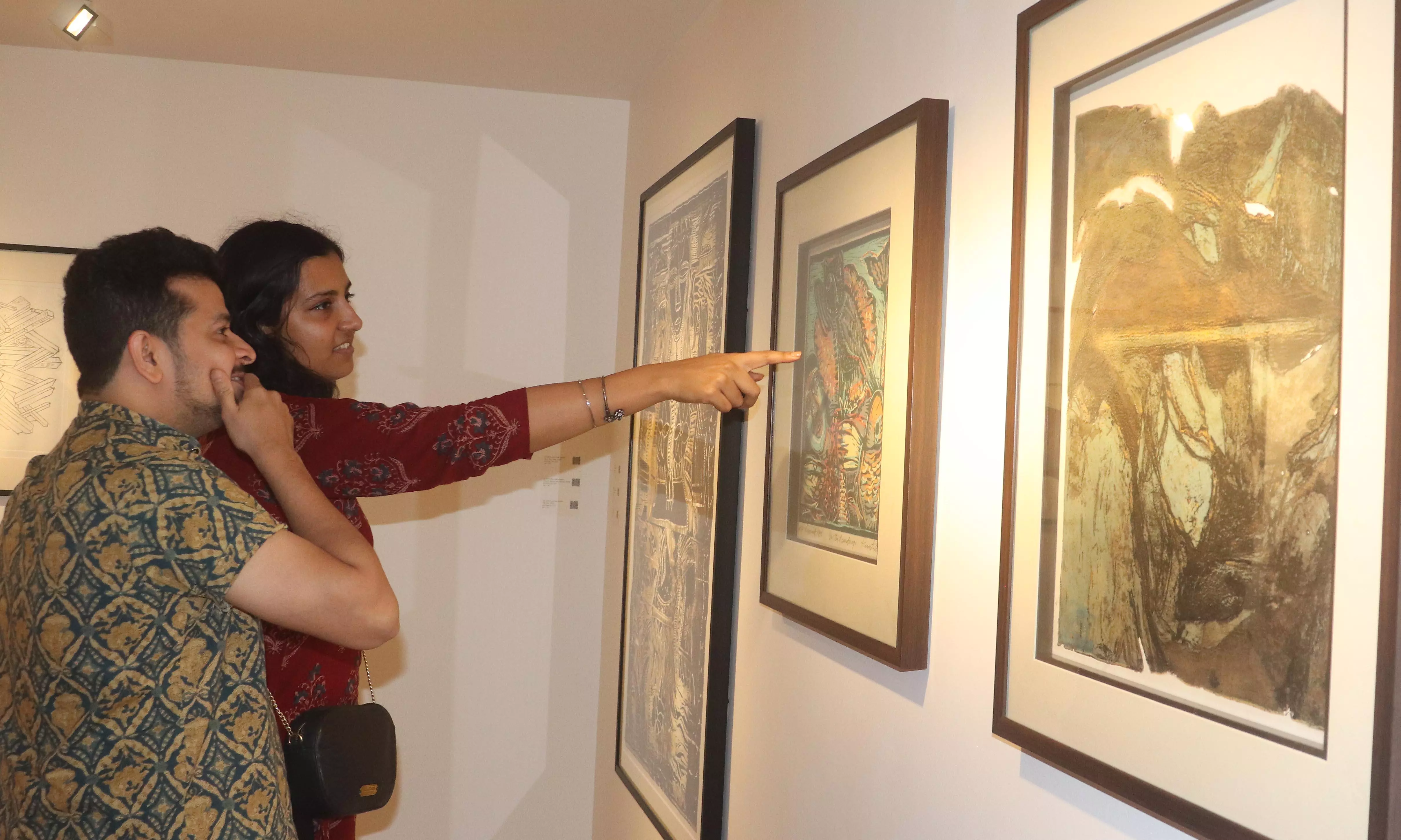Andhra, Telangana Artists Unite in ‘Inked Legacies’ Exhibit

Hyderabad: "You know, we forget that we’re nature," the artist Gayatri Danthuri says, as she speaks on one of her prints. "A hipbone, a butterfly a petal, it’s all the same. It’s all connected," she adds, as if she’s explaining something obvious.
But when one stands in front of her etchings, they see what she means. A hipbone morphs into wings, branches curl like ribcages. Her art explores the body, especially the female body to show where it comes from.
This is what ‘Inked Legacies, Linking Geographies’ at Srishti Art Gallery is about— connection. Not in a poetic, abstract way, but in the physicality of it. Like scarred landscapes, human forms, and the tools that bring them to life.
The exhibition, curated by Deeksha Nath, brings together printmakers from Andhra Pradesh and Telangana who studied at Baroda’s Faculty of Fine Arts. It moves from legends like K.G. Subramanyan, a Padma Vibhushan awardee, Jyoti Bhatt, who was awarded the Padma Shri, Gulammohammed Sheikh and the renowned Laxma Goud of Telangana to younger artists like Gayatri.
But it’s not just a history lesson. It’s a conversation about land, bodies and what ties them together.
"Printmaking is rough work," Gayatri tells Deccan Chronicle. "You scratch into metal, dip it in acid, layer ink on top. It’s harsh but also sensitive. That’s why I love it. It forces you to think about every step." Speaking on the fine lines that cut through dark shades, she adds, "This took days to get right, but it’s worth it. You learn patience."
Patience is everywhere in this exhibition. It’s in the way K.G. Subramanyan’s lithographs reveal relationships between humans, animals and spaces. His work feels deceptively simple, but that is far from the truth.
"He taught his students to look beyond the surface," says Selavu Kandukuri, the gallery manager. "He wanted them to create their own language, not impose his."
And they did. In Jyoti Bhatt’s prints, folk patterns and tantric forms come together to create something that feels playful and layered at the same time. On the other hand, Gulammohammed Sheikh uses maps to speak of memories and connections. "It’s like a map, but not of places," Selavu says, pointing at an artwork titled “City of Statues and Ghosts”.
And then there’s Laxma Goud, whose etchings bring rural intimacy to life. His work is unapologetic and rooted in the realities of village life. "When I saw his prints in college, I couldn’t even talk to him," Gayatri says. "He was larger than life. But his work taught me to be honest, even if it’s uncomfortable."
Speaking of uncomfortable, the tonal shift in Soghra Khurasani’s works is stark. Specifically, her “And This Burning Land Belongs to You” is a brutal piece with orange and red, like fire ripping through the earth.
"This is anger," Selavu says. "It’s the female body as a scarred landscape. The craters are wounds." She uses the feminine gaze on landscape art as a metaphor for ecological abuse and gender violence. The dominance of the red colour also adds a menstrual motif.
"You know," Gayatri says, almost as an afterthought, "Not everyone understands printmaking. But it’s my language. It’s how I make sense of everything."

